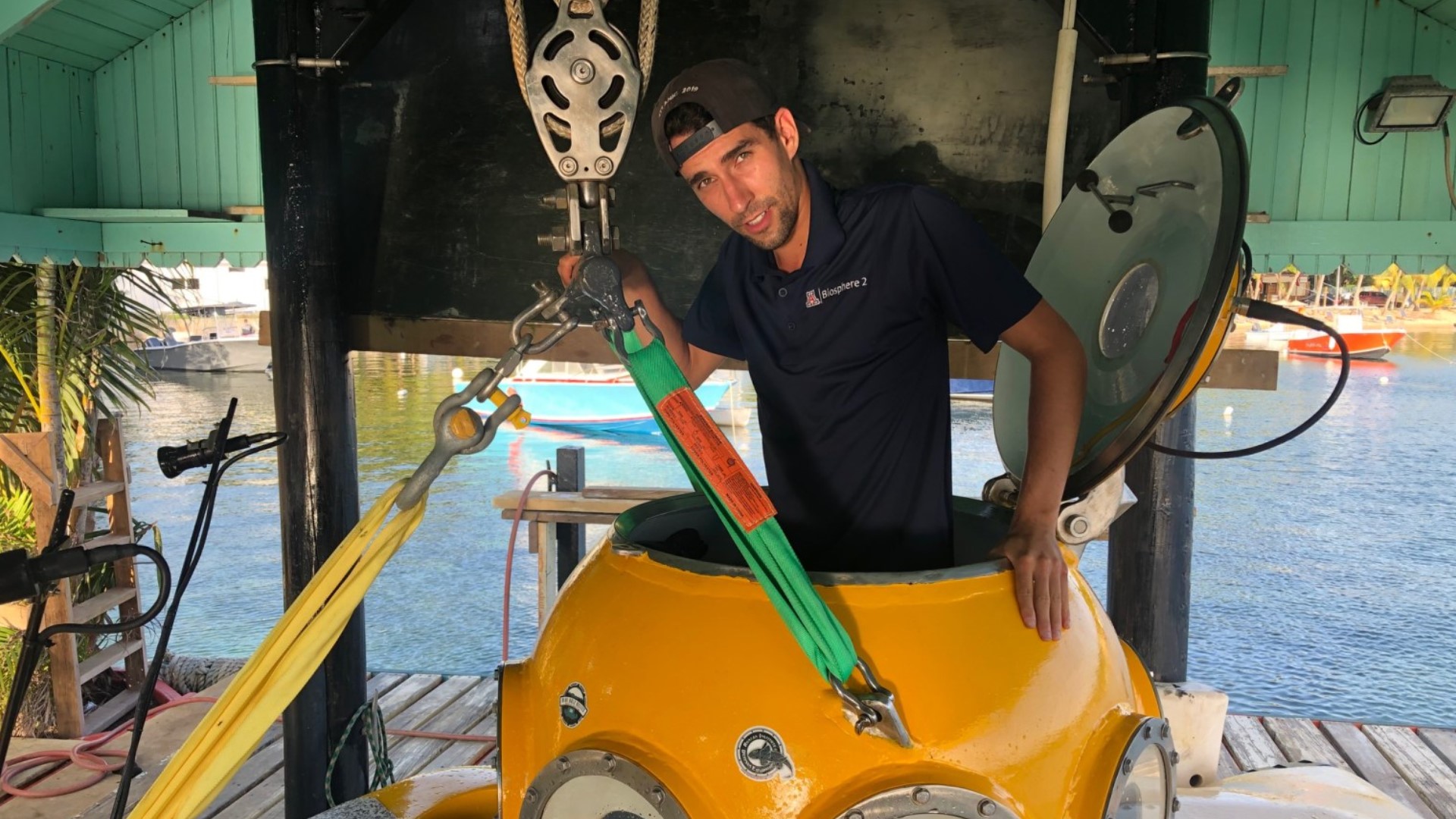ROATÁN, Honduras — From the edge of space to the deep blue sea, Trent Tresch is taking a DIY approach to the art of discovery.
“These extreme environments, it just feels like you’re on an alien planet,” Tresch said.
When we last met up with the Seattle adventurer, he was building his own spacesuit, working with a team of citizen scientists to have it tested on a high-altitude balloon flight. But lately, he’s turned his sights to what lies beneath the waves. And he’s in awe with what he’s found there.
“Things that you would just never imagine,” he said.
RELATED: Seattle man builds his own spacesuit
Trent put together an expedition to the Honduran coast, known for its exceedingly deep water.
“And we get to dive deep,” he said. “Upwards of 15, 18-hundred feet below the surface.”
Two dozen Explorers Club members paid their own way.
“People who are genuinely curious about the world,” Tresch said.
They pooled their resources to hire a submarine and pilot for a three-week oceanographic mission.
“We had mathematicians and filmmakers and engineers and other marine scientists on board," Tresch said.
The ocean did not disappoint.
The explorers, working with university researchers back in the states, tested a new way to gather deep-sea samples of micro-plastic pollution.
“It’s an unfortunate reality that micro-plastics have really invaded all parts of our world,” Tresch explained.
They also tagged six-gill sharks with electronic trackers to record their movements.
“They’re so far down that they’re just difficult to study,” he said. “By getting down to the depth where these sharks are found naturally, at about 2,000 feet below the surface, it was a lot easier to get them tagged.”
The trackers were harmlessly placed on the sharks with a remarkably simple system: A modified spear gun triggered by a rope attached to one of the sub’s thrusters.
“As it would spool-up, it would then pull the trigger and then mechanically release the tag,” Tresch said.
The group stumbled across a surprise or two, including a new type of creature known as a comb jelly.
“It is an unidentified species,” Tresch explained.
Using off-the-shelf parts and a do-it-yourself approach, the amateur team has been able to slash costs to a fraction of similar expeditions.
“Yeah, I felt like MacGyver,” Tresch said.
What they’re learning will give scientists a better view of our climate-threatened oceans and ever-changing planet.
“We all have the potential to make impacts on the world.”
KING 5's Evening celebrates the Northwest. Contact us: Facebook, Twitter, Instagram, Email.

